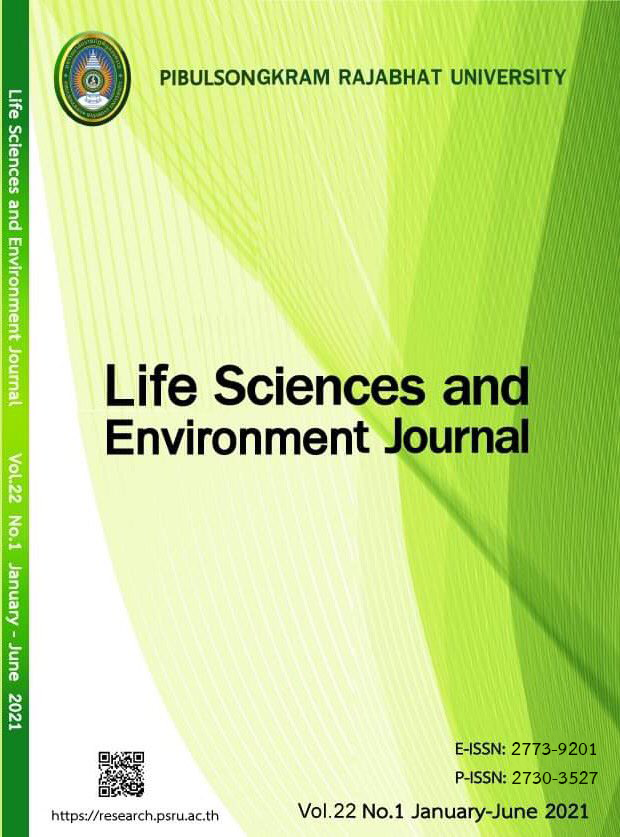IMPROVEMENT OF ADSORPTION EFFICIENCY ON CARBON BLACK DERIVED FROM PLASTIC WASTE PYROLYSIS
Keywords:
Carbon black, Iodine adsorption number, ActivationAbstract
In this research, the adsorption characteristics of carbon black derived from municipal plastic waste pyrolysis were improved by both physical and chemical activations methods for improving of surface area. The carbon black was firstly physically treated with various activation temperature and period of carbonization followed by chemically treated with various types and concentrations of chemicals such as sulfuric acid, phosphoric acid, sodium hydroxide and zinc chloride. The iodine adsorption number (IAN) was calculated via iodine titration for indication of adsorption efficiency of the activated carbon black. Furthermore, physical and chemical properties of activated carbon black was characterized by Brunauer-Emmett-Teller, scanning electron microscope/energy dispersive spectroscopy and Fourier transform infrared spectrometry analysis. From experimental results, the suitable condition for activation of carbon black is 400ºC for 15 minutes, followed by impregnation with 20% (w/w) sodium hydroxide for 15 minutes. In comparison with non-activated carbon black, both iodine adsorption number and specific surface area increased from 110.24 to 200.41 mg/g and from 5.45 to 12.63 m2/g, respectively. This is indicated that surface area of the activated carbon black is comparable to the commercial carbon black (11 m2/g).
References
Accorsi JV. The Impact of Carbon Black Morphology and Dispersion on the Weather ability of Polyethylene. The international Wire and Cable Symposium: Atlantic City; 1999.
American Society for Testing and Materials. ASTMD1510-06a Standard Test Method for Carbon Black-Iodine Adsorption Number. ASTM International.
Bansode RR, Lossoa JN, Marshall WE. et al. Adsorption of volatile organic compounds by pecan shell and almond shell-based granular activated carbons. Bioresource Technology 2003;90:175-184.
Budinova T, Petrov N, Parra J. et al. Use of an activated carbon from antibiotic waste for the removal of Hg (II) aqueous solution. Journal of Environmental Management 2008;88(1):72-165.
Cheung WH, Lau SSY, Leung SY. et al. Characteristics of chemical modified activated carbons from bamboo scaffolding. Chinese Journal of Chemical 2012;(20)3:515-523.
Ismadji S, Sudaryanto Y, Hartono SB. et al. Activated carbon from char obtained from vacuum pyrolysis of teak sawdust: Pore structure development and characterization. Bioresource Technology 2005;96: 1364-1369.
Kladcharoen P. Production and Testing of Activated Carbon Obtained from Thysostachys Siamensis Pyrolysis. Master of Faculty of Science (industrial Chemistry), Chiangmai University; 2011.
Menendez-Diaz JA, Martin-Gullon I. Types of carbon adsorbent and their production. Interface Science and Technology 2006;7:1-47.
Mopoung S, Inkum S, Anuwetch L. Effect of temperature on micropore of activated carbon from sticky rice straw by H3PO4 activation. Carbon–Science and Technology 2015;7(3):24–29.
Rizhikovs J, Zandersons J. Spince S. et al. Preparation of granular activated carbon from hydrothermally treated and pelletized deciduous wood. Journal of Analytical and Applied Pyrolysis 2012;93:68-76.
Sae-oui P. Rubber Chemistry. 2nd Edition, National Metal and Materials Technology Center; 1994: 70-98.
Thammee N, Kekngoun M, Mopoung S. The surface properties of activated carbon prepared from the trunk, root and peel of cassava. NU science Journal 2012;9:80-97.
Downloads
Published
How to Cite
Issue
Section
License
Each article is copyrighted © by its author(s) and is published under license from the author(s).










